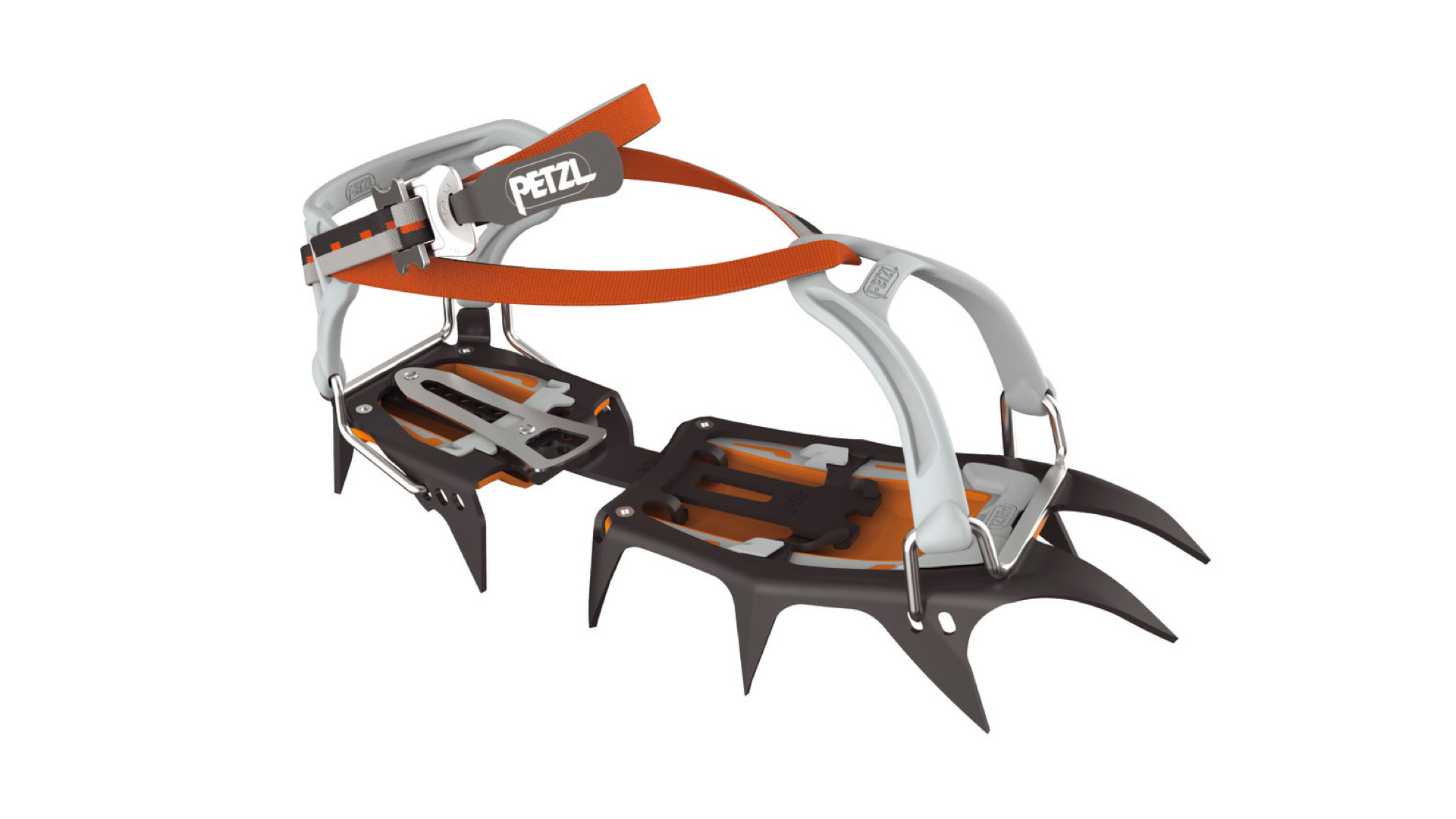Advnture Verdict
If you’re looking for a capable yet lightweight all-steel crampon, the Petzl Vasak would be our top pick. It climbs almost as well as anything else we’ve tried with 12 points, with great adjustment and adaptability for use with different types of boots and terrain too. Just note that if you do a lot of mountaineering on mixed terrain, the anti-balling plates seem slightly susceptible to wear.
Pros
- +
Lightweight
- +
Easy and secure fit
- +
Available in strap (Flexlock) or semi-auto/fully auto (Leverlock) bindings
- +
Adaptable and versatile design
- +
Fit almost all boot sizes
Cons
- -
Anti-balling plates susceptible to wear
You can trust Advnture
Petzl Vasak: first impressions
Along with the Black Diamond Serac and Grivel G12, the Petzl Vasak is the third model in the trio of “classic mountaineering crampons” that, between them, are worn by probably 75% of mountaineers in the UK and Europe (all three are featured in our best crampons buying guide).
Just like those two rivals, Petzl Vasaks have a 12-point, all-steel design that provides good stability and bite on a range of different frozen terrain. However, they’re a little lighter than either of those competitors, and arguably a little more versatile and adaptable too. How so? Well, they’re available in two different binding systems to work with different boot types – but the Leverlock model actually comes with modular front bails and clips so you can use them with B2s or B3s (see best winter hiking boots for an explanation of the B1 / B2 / B3 ranking system).
One thing we particularly like about the Vasaks is the fact that the linking bars have two sets of holes. This enables a more precise fine-tuning of fit, and their shape also means they work better with boots that are more offset or asymmetric at the toe.
In addition, all the current models in Petzl’s comprehensive crampon range are fully modular. The brand calls this the “Alpen Adapt” system. It means that binding systems are all interchangeable, while front sections, linking bars, anti-balling plates and bindings can be all replaced separately. With the Vasak, you can even swap the front sections with those from the more technical Sarken or Dart models to convert them into full-on technical climbing crampons.
The major advantage of this is that if you buy new boots, or start to climb at a higher grade, you can effectively upgrade your existing crampons to suit, rather than having to buy a completely new pair. Given the cost of most winter climbing kit, that’s an undoubted benefit.
• RRP: $160 (US) / £130 (UK)
• Weight (58cm version): 842g / 29.7oz
• Materials: Painted hardened steel, ABS plastic, nylon webbing
Petzl Vasak: in the mountains
The Vasaks are easy to adjust and their clean profile certainly suited the boots we paired them with (Scarpa Manta Techs), resulting in a slightly closer fit than we got with other crampons on test. Of course, the multitude of different boots on the market means that fitting crampons is never an exact science, and only trial and error would really give you a sense of the optimum pairing for you.
In the mountains, we didn’t notice significant performance differences between these, the Seracs or the G12s – the G12 might have marginally longer front points, and the angles of the secondary points differ slightly too, but it doesn’t seem to translate into a noticeably better or worse climbing efficiency. Ultimately, we reckon choosing between any of the three will largely come down to personal preference.
All the latest inspiration, tips and guides to help you plan your next Advnture!
We did appreciate the streamlined design and the lower weight of the Vasaks, though. They’re marginally lighter than both the Black Diamond Serac and the Grivel G12, as well as most other steel 12-point crampons on the market, which is only a good thing after a long day in the hills – whether you’ve spent most of it with crampons on your feet or in your pack. They also compress down more neatly than some competitors, which reduces bulk when stored.
The only potential drawback we noted – in common with other users – is that on mixed terrain, the Petzl anti-balling plates tend to show more wear more quickly than most others. We reckon this is because the plastic is flexible but also fairly soft. Fortunately, these components are easily replaceable and relatively inexpensive if you do start to wear them out. And all in all, it’s a minor trade-off to make in exchange for such solid performance, while coming in a slightly lower weight than other steel crampons too.
An outdoors writer and editor, Matt Jones has been testing kit in the field for nearly a decade. Having worked for both the Ramblers and the Scouts, he knows one or two things about walking and camping, and loves all things adventure, particularly long-distance backpacking, wild camping and climbing mountains – especially in Wales. He’s based in Snowdonia and last year thru-hiked the Cambrian Way, which runs for 298 miles from Cardiff to Conwy, with a total ascent of 73,700 feet – that’s nearly 2½ times the height of Everest. Follow Matt on Instagram and Twitter.


